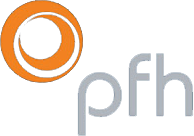A breath of fresh air: Ventilation and the future of healthy homes

Condensation and mould have long been a challenge in UK homes, particularly within the social housing sector. As homes have been upgraded to be more energy efficient and airtight, the risk of excess moisture builds – often with serious consequences. Mould isn’t just unsightly; it poses real risks to both health and property.
Moisture in the home is inevitable. When four people live in a three-bedroom home, they can generate over 112 pints of moisture every week through everyday activities like cooking, washing and even breathing. But without sufficient ventilation, that moisture can lead to persistent condensation – which in turn creates the ideal conditions for mould to thrive.
With one in five UK homes affected by damp or mould-related issues, now more than ever, ventilation is a crucial part of the conversation.
The Socioeconomic climate
Covid-19 has increased consumer awareness of the impact of poor indoor air quality (IAQ) and the health risks of condensation and mould. Residents are more informed and more likely to challenge poor living conditions – and social landlords must be prepared to respond. This has heightened the need for robust ventilation solutions that help combat high levels of moisture and improve IAQ.
The cost-of-living crisis also challenged social landlords, as there is a direct relationship between temperature and relative humidity. Every 1 degree change in temperature will lead to a 5% increase or decrease in relative humidity. With increasing costs for the UK public residents
The regulatory landscape has shifted
The Homes (Fitness for Human Habitation) Act 2018 driven by a former Westminster MP, Karen Buck drove change to regulate landlords in both the private and social sector to offer properties with no issues such as leaks, poor heating, damp and mould.
In recent years, there have been major shifts in regulation and public expectation around housing conditions, and rightly so. The 2022 updates to Approved Document F of Building Regulations significantly raised whole-dwelling ventilation requirements and introduced a stipulation that every habitable room must include background ventilation – regardless of air permeability.
Alongside this, Approved Document L and the forthcoming Future Homes and Buildings Standard are tightening energy efficiency targets. Due to take effect later this year, the standard will require new homes to cut carbon emissions by 75%, requiring the need for more sophisticated, low-energy ventilation solutions. This is driving up standards of indoor air quality in homes across the industry.
Ventilation is now legally classed as a ‘controlled service’, meaning it must be installed by a competent person and is considered notifiable work. Housing providers must ensure their contractors are properly trained and registered under third-party Competent Person Schemes.
And in the wake of the Awaab Ishak tragedy, the introduction of Awaab’s Lawin October this year will mandate that damp and mould issues in social housing are investigated and resolved within fixed timeframes – putting the onus firmly on providers to act quickly and effectively.
These changes, combined with the critical Housing Ombudsman report released in 2021, have triggered a much more proactive approach from the sector – and a realisation that prevention is not just preferable, but essential.
Seven practical solutions and training to meet evolving standards
- Supporting competency across the sector
Meeting these new standards means developing the skills needed to deliver high-quality installations. The NICEIC offer the NICEIC domestic ventilation course which provides contractors and installers means to meet this requirement.
Typically, this is two-day course provides practical and theoretical training in system installation, commissioning and compliance. It’s the recognised route to joining a Competent Person Scheme in England, Wales, Scotland, and Northern Ireland.
- Continuous running centralised & de-centralised extract ventilation
A popular choice for bathrooms, kitchens and WCs in recent years has been a shift from intermittent fans to continuous running extract systems. These can be a whole-house (centralised) or a decentralised system with the fans located in the kitchen, bathroom, etc. Considerations when specifying a product like this should be how easy it is to maintain, how energy-efficient it is, length of warranty, boost and trickle rates and if the mechanical ventilation system comes with built-in data logging.
For whole-house solutions, PIV is ideal – especially in properties where major renovation isn’t viable. Typically installed in the loft, PIV systems introduce filtered, fresh air throughout the home, diluting pollutants and displacing moisture-laden air. This reduces condensation and prevents mould from gaining a foothold – creating healthier, safer living environments.
- Mechanical ventilation with heat recovery
For new build and on occasions retrofit projects mechanical ventilation with heat recovery (MVHR) is a great ventilation solution to improve indoor air quality, recover potential lost heat and support with a whole house ventilation system. This system choice can recover between 73% to 95% of the heat in the exhaust air and a great method to help make a property more energy efficient. It can be an essential part of a new build property design, support with SAP points and provide the resident with and effective solution to combat condensation and mould.
- Remote environmental data logging
With the regulatory changes in the marketplace and with Awaab’s Law greater requirement for auditing and reporting there is a growing need for remote environmental data logging.
This solution provides real-time data to the social landlord’s desk of relative humidity and temperature levels in their housing stock. It will help when linked with other building measures to combat disrepair cases. Data logging also helps provide insights to residents and helps aid behavioral changes that can mitigate condensation and mould. It can also support reporting and raise red flags of properties where a social landlord needs to act so problems are dealt with proactively.
- Design support for social housing providers
We know that one size doesn’t fit all when it comes to ventilation systems. That’s why ventilation design for social housing providers is important. This includes detailed technical drawings to support compliance with SAP assessments, Passivhaus methodology, and the latest Building Regulations.
This ensures that landlords and contractors are not only compliant, but also getting the most appropriate, efficient system for each specific property type.
- Choosing the right partner in ventilation
The landscape for social landlords is changing rapidly – with tighter regulations, increased legal scrutiny, and higher resident expectations. But with the right strategy and the right partner, housing providers can turn this into an opportunity to improve property performance, reduce complaints, and most importantly improve resident engagement and safety.
With thanks to James Kane, Head of Social Housing Sales at EnviroVent, an awarded supplier on the PfH Responsive Repairs and Void Works DPS
Learn more about PfH’s Integrated Traditional Build and MMC Framework here.
